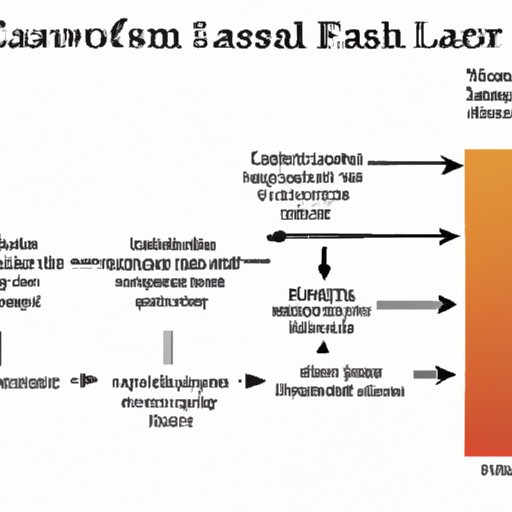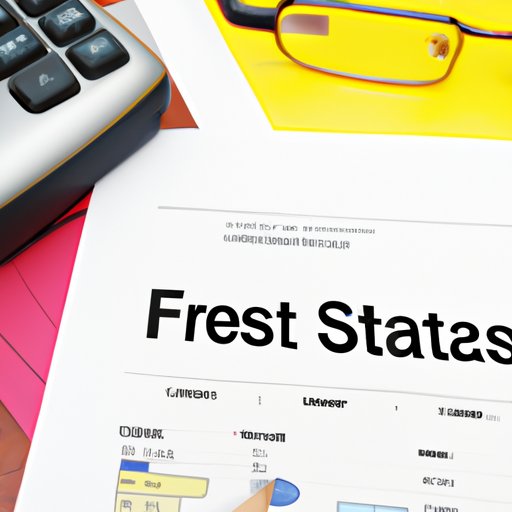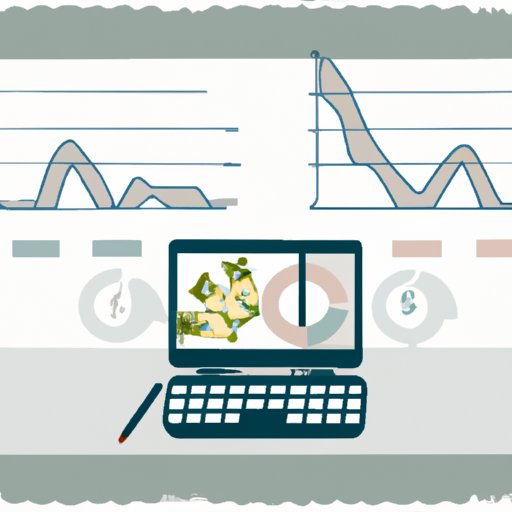Introduction
A financial analysis is an evaluation of a company’s financial health and performance. It involves analyzing a company’s financial statements, assessing its liquidity and solvency, and evaluating the overall financial position of the business. This article will provide an overview of what to include in a comprehensive financial analysis.
Components of a Comprehensive Financial Analysis
A comprehensive financial analysis should include an assessment of the following: cash flow and liquidity ratios, profitability ratios, leverage ratios, investment performance, and stress tests on financials.

Assessing Cash Flow and Liquidity Ratios
Cash flow and liquidity are important factors when assessing a company’s financial health. The ability to generate sufficient cash flow and maintain adequate liquidity are essential for a company’s survival and growth. Cash flow and liquidity ratios can be used to measure a company’s ability to generate sufficient cash flow and maintain adequate liquidity.
Cash flow ratios measure a company’s ability to generate sufficient cash flow. Common cash flow ratios include the cash flow to sales ratio, the operating cash flow ratio, and the free cash flow ratio. These ratios can be calculated by dividing the relevant cash flow number by the total sales or total assets.
Liquidity ratios measure a company’s ability to maintain adequate liquidity. Common liquidity ratios include the current ratio, the quick ratio, and the cash ratio. These ratios can be calculated by dividing the relevant asset or liability by the total current liabilities.
Calculating Profitability Ratios
Profitability ratios measure a company’s ability to generate profits from its operations. Common profitability ratios include the return on assets (ROA) and the return on equity (ROE). ROA measures the efficiency with which a company is able to generate profits from its total assets, while ROE measures the efficiency with which a company is able to generate profits from its shareholders’ equity.
ROA can be calculated by dividing the net income by the total assets. ROE can be calculated by dividing the net income by the shareholders’ equity. Other profitability ratios include gross profit margin, operating profit margin, and net profit margin.
Analyzing Leverage Ratios
Leverage ratios measure a company’s ability to finance its operations with debt. Common leverage ratios include the debt-to-equity ratio, the interest coverage ratio, and the total debt ratio. The debt-to-equity ratio measures the amount of debt relative to equity, the interest coverage ratio measures the ability to pay interest expenses, and the total debt ratio measures the percentage of total assets that are financed with debt.
The debt-to-equity ratio can be calculated by dividing total liabilities by total equity. The interest coverage ratio can be calculated by dividing earnings before interest and taxes (EBIT) by interest expense. The total debt ratio can be calculated by dividing total liabilities by total assets.
Evaluating Investment Performance
Investment performance is an important indicator of a company’s financial health. Common measures of investment performance include the internal rate of return (IRR), the net present value (NPV), and the capital asset pricing model (CAPM). IRR measures the returns generated by an investment, NPV measures the value of an investment in today’s dollars, and CAPM measures the risk-adjusted returns of an investment.
IRR can be calculated by discounting the cash flows generated by an investment at a certain rate. NPV can be calculated by subtracting the cost of an investment from the present value of its future cash flows. CAPM can be calculated by multiplying the expected return of the market by the beta of the security.

Performing a Stress Test on Financials
Stress testing is a process of simulating different scenarios to assess the impact on a company’s financials. Stress tests can be used to identify potential risks and evaluate the resilience of a company in adverse conditions. Benefits of stress testing include improved risk management, better decision making, and increased transparency.
Steps for performing a stress test include defining the scope of the test, selecting the scenarios to be tested, running the simulations, and analyzing the results. The scope of the test should define the parameters of the simulation, the scenarios to be tested should reflect potential risks, the simulations should accurately capture the behavior of the system, and the results should be analyzed and reported.
Conclusion
A comprehensive financial analysis should include an assessment of cash flow and liquidity ratios, profitability ratios, leverage ratios, investment performance, and stress tests on financials. Cash flow and liquidity ratios can be used to measure a company’s ability to generate sufficient cash flow and maintain adequate liquidity. Profitability ratios measure a company’s ability to generate profits from its operations. Leverage ratios measure a company’s ability to finance its operations with debt. Investment performance is an important indicator of a company’s financial health. Stress tests are used to identify potential risks and evaluate the resilience of a company in adverse conditions. Performing a financial analysis can help a company identify areas of improvement and make informed decisions.
(Note: Is this article not meeting your expectations? Do you have knowledge or insights to share? Unlock new opportunities and expand your reach by joining our authors team. Click Registration to join us and share your expertise with our readers.)
